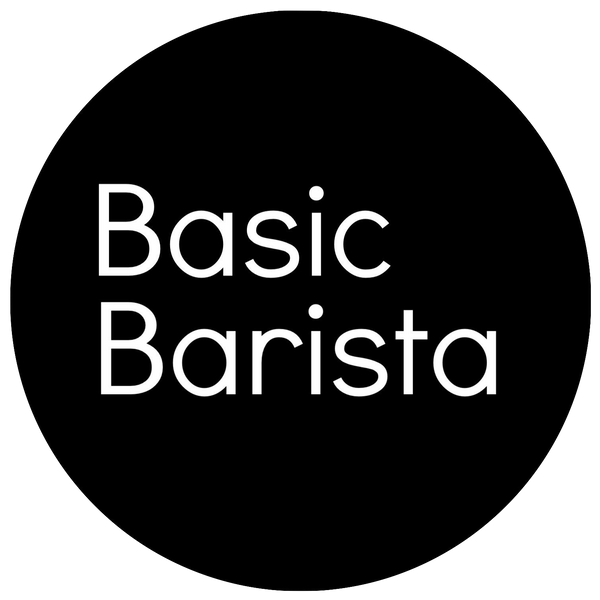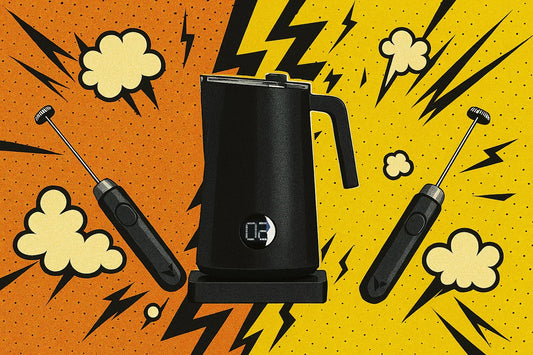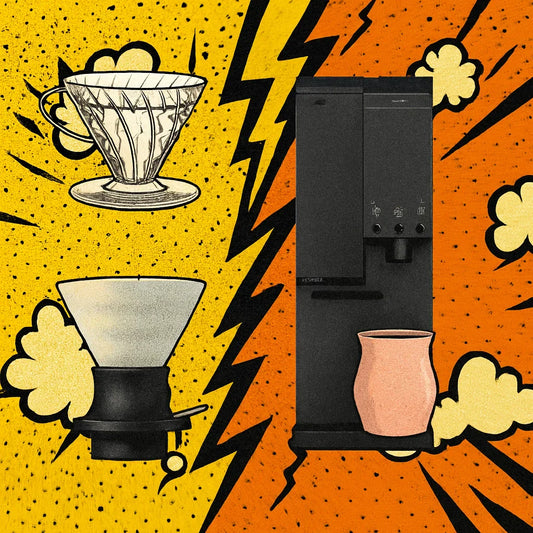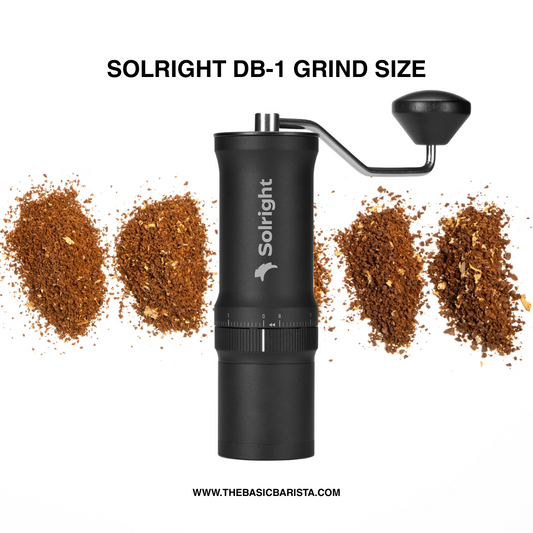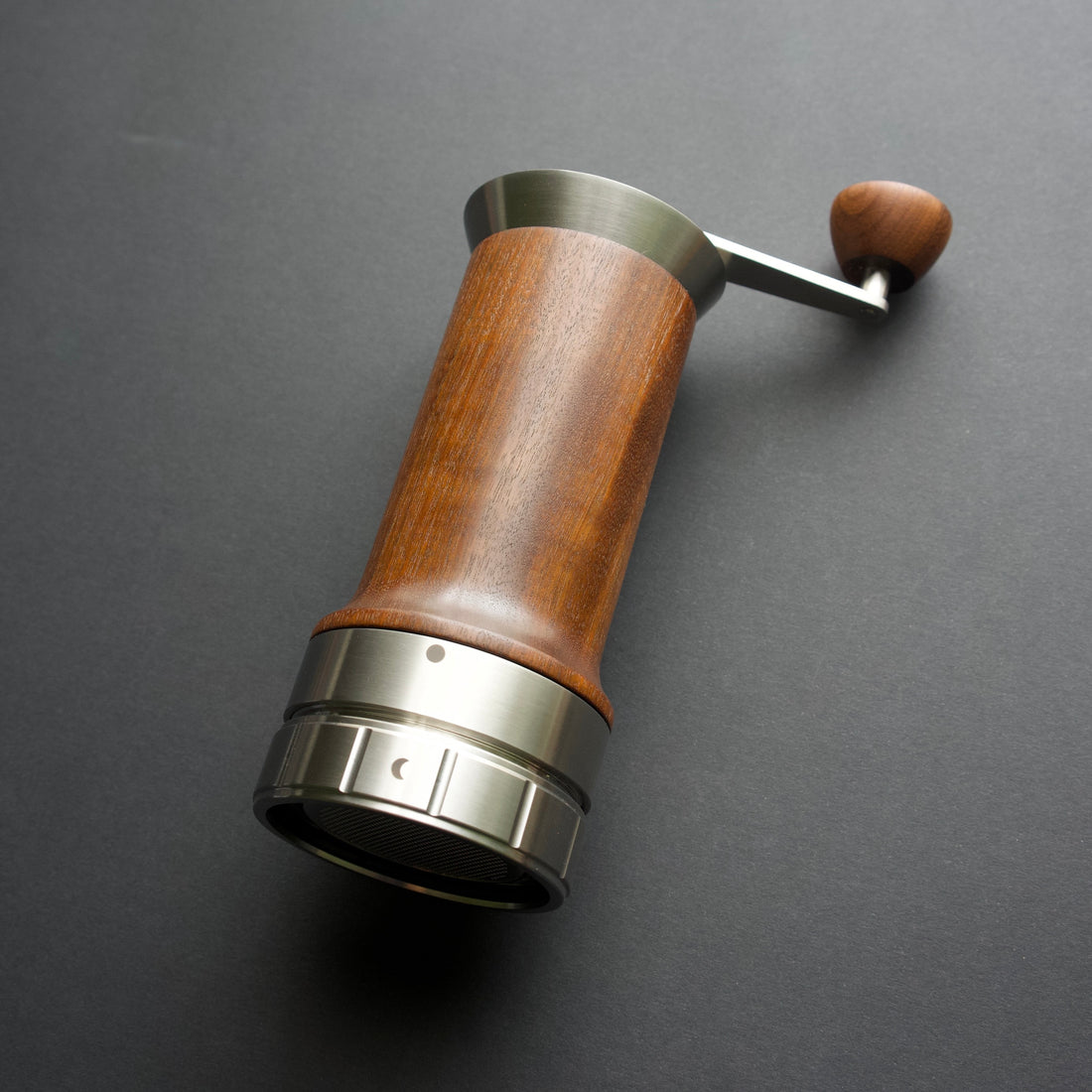
How to Make Better Espresso at Home
Share this article
Its a bit more fiddly to make a good espresso at home than it is a drip coffee. This is because you are brewing with much smaller quantities of water and therefore have less room for error when it comes to achieving optimal extraction.
Here, we are going to go through the steps you need to take to make an excellent espresso at home.

I am going to start out with the basics, such as the beans and the tools that you need to use, and then move onto the more advanced aspects of espresso making such as temperature and tamp control.
1. Medium / Dark Roast Coffee is More Forgiving
While espresso can be made with any roast, typically coffee is developed longer for espresso. Using a dark or medium dark roast coffee when making espresso will extract more quickly than lighter roasts.
While it is possible to make an excellent espresso with light roast coffee, dark roasts’ quicker extraction means that they are more forgiving than light roasts - remember we have limited time and water to work with.
Lighter roasted coffee requires you to get your grind and tamp perfect to get sufficient extraction. With darker roasts you can have more room for error, making them much better for beginners to brew espresso with.
The Good Tides Blend is perfect for espresso, especially if you are new to making coffee at home.
2. Either Grind Your Beans With A Burr Grinder Or Use A Pressurised Portafilter Basket
The way your coffee is ground is much more important for espresso than for filter coffee.
Your coffee beans need to be ground finely and evenly for your espresso to extract properly.
You can only achieve such an even grind with a burr grinder. If you grind your own coffee then it's well worth investing in this type of grinder - here is our selection of coffee grinders.
You can still make espresso with pre ground coffee, or with beans ground with a blade grinder, however you will need to use a pressurised portafilter basket when brewing with coffee that has been ground in these ways.
A pressurised portafilter basket forces all your espresso through one tiny hole. This assists with evenness of extraction, making up for any potential unevenness in your grind.
You can tell if a portafilter basket is pressurised or not by the number of holes in the bottom of it (see the image below - the red circle highlights the single hole in the pressurised portafilter basket on the right).

Non pressurised portafilters have hundreds of tiny holes whereas a pressurised portafilter usually has one hole
If you are brewing with coffee that has been ground in a burr grinder, then you should use a non-pressurized portafilter (in the left of the photo). These make a better quality espresso when used with properly ground coffee.
Most espresso machines come with both types of basket so you can brew with both pre ground and freshly ground coffee.
3. Weigh Your Ground Beans and Final Coffee
Espresso should be brewed at between a 1:2 ground coffee in to liquid coffee out ratio.

The only way you can reliably tell if you are brewing at this ratio is by weighing out your ground coffee and your final drink.
It's well worth investing in a small scale that can measure accurately to the nearest gram. You want the scale to be small enough that you can fit it under your cup when brewing.
Even though one millilitre of water weighs one gram, it's not accurate to measure your final espresso by volume rather than by weight. This is because espresso has a layer of crema (foam) on top of it which significantly adds to its volume without there being that much additional liquid.
Weighing your final espresso, rather than measuring it out by volume, takes crema into account and allows you to accurately measure your final dose.
4. Use the Dose of Coffee That Your Portafilter Basket Was Designed For
Your portafilter basket is the part of your espresso machine where the ground coffee sits during brewing.
Each portafilter basket has been designed to only hold a certain amount of coffee. If you overfill your portafilter basket, then your brewing water will not be dispersed evenly across the bed of coffee, and small sections of your coffee will be over extracted during brewing.
This creates a harsh, bitter tasting espresso.
Your portafilter basket’s maximum volume is usually printed on its side. If you cannot find it there then it will definitely be in your espresso machine’s manual.
Use this maximum volume as a guide to how much ground coffee you brew with then dose out your water based on a 2:1 brew ratio.
5. Time Your Shot to Inform Your Tamping
One of the most difficult parts of making espresso is tamping your puck of coffee.
You want to tamp with just enough pressure that there is enough space between your coffee grounds that water can run through it, but not too much space that water runs through the coffee too quickly for it to extract properly.
The best way to know whether you have tamped your coffee in an ideal way is by timing how long it takes for your espresso to brew.
Espresso should ideally take 25 seconds to brew. This time starts when you press the brew button on your machine, and finishes when espresso stops running out of your machine.
If your shot takes over 25 seconds to pull, then you have likely tamped with too much pressure. Your ground coffee is so tightly packed that water cannot run through it, and this excessive contact time between ground coffee and water will create harsh notes in your drink.
If your shot takes under 25 seconds to pull, then you haven’t tamped your coffee with enough pressure. Your coffee is packed too loosely and water can run through it too quickly to extract properly. Your final drink will be either sharp or just a bit bland due to this lack of extraction.
6. Warm Up Your Espresso Machine Prior To Brewing
Espresso should be brewed at a temperature between 195 and 205 Fahrenheit.
While espresso machines heat up your water to this temperature, if the metal head of your portafilter is cold, then your brewing water will be significantly cooler than this when it makes contact with your coffee.
You can mitigate this cooling by warming up your portafilter prior to brewing.
You have two ways of doing this. You can either put your portafilter head in a cup of hot water before brewing, or you can brew a couple of shots with your machine without putting any coffee in your portafilter.
Brewing at an ideal temperature ensures that extraction happens as efficiently as possible resulting in a more complex flavoured espresso.
Wrapping Up
To make a good espresso at home, you have to:
- Use medium dark or dark roast beans
- Grind your beans finely with a burr grinder or use a pressurised portafilter
- Not exceed your portafilter basket’s maximum weight
- Warm up your espresso machine prior to brewing
- Use a 1:2 coffee to water ratio, measuring out both your coffee and water by weight
- Aim to brew for 25 seconds, and tamp more heavily if you go over this (and more lightly if you go under)
The tamp is the hardest part of this process to get right, you will likely have to practise this a bit before you brew consistently good shots.
If you’re interested in more ways of brewing coffee you can check out our ultimate guide to brewing with an Aeropress.
This article was contributed by Oli Baise. Oli is a barista who runs the coffee blog Drinky Coffee.
